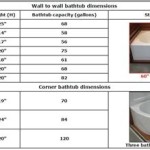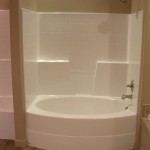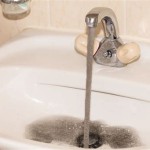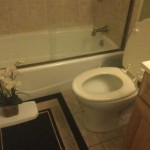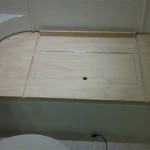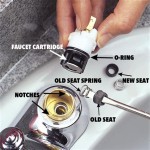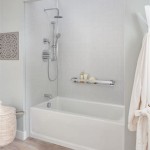Jacuzzi and Bathtub: Dissecting the Key Differences
Bathing is an integral part of hygiene and relaxation for many individuals. Two common fixtures associated with bathing are jacuzzis and bathtubs. While both serve the fundamental purpose of holding water for bathing, they differ significantly in their features, functionality, and overall bathing experience. Understanding these distinctions is crucial for homeowners when deciding which option best suits their needs and preferences.
This article will explore the nuanced differences between jacuzzis and bathtubs, focusing on key aspects such as hydrotherapy capabilities, cleaning and maintenance requirements, installation complexities, cost implications, and suitability for different bathing preferences.
Hydrotherapy and Functionality: The Core Distinction
The primary distinction lies in the hydrotherapy aspect. A bathtub is fundamentally designed to hold water, allowing a person to soak and clean themselves. Its functionality is simple and straightforward. Historically, bathtubs were primarily utilitarian, serving solely as a vessel for washing. Modern bathtubs may offer features such as ergonomic designs and built-in backrests for enhanced comfort, but they generally lack active hydrotherapy components.
A jacuzzi, on the other hand, is designed for hydrotherapy. It incorporates jets that circulate water mixed with air, creating a massaging effect. This feature is intended to provide relaxation, relieve muscle soreness, and improve circulation. The intensity of the jets, water temperature, and jet placement are often adjustable, allowing users to customize their hydrotherapy experience. The core function of a jacuzzi extends beyond basic hygiene to therapeutic benefits.
The technology involved in creating this hydrotherapy is significantly different. Bathtubs rely on manual temperature control and the hydrostatic pressure of the water itself. Jacuzzis incorporate pumps, heaters, and a control system to regulate water temperature, jet pressure, and operating cycles. These components contribute to the complex functionality that sets them apart. This difference in functionality also translates to differences in energy consumption and maintenance requirements.
Bathtubs offer a static bathing experience, where the user controls the water temperature and immersion depth. Jacuzzis provide a dynamic bathing experience, where the user can actively engage with the water through the jets and adjust the settings to achieve a desired therapeutic effect. These differences stem from the fundamental design philosophies behind each fixture.
Cleaning and Maintenance: Varying Levels of Complexity
The maintenance requirements of a bathtub are generally simpler than those of a jacuzzi. Bathtubs primarily require regular cleaning to prevent the buildup of soap scum, mineral deposits, and other debris. Simple cleaning solutions and non-abrasive scrubbers are typically sufficient for this purpose. Draining and rinsing the bathtub after each use can also minimize the need for extensive cleaning.
Jacuzzis require more involved cleaning and maintenance due to the complexity of their systems. The jets, pumps, and plumbing lines are susceptible to the buildup of biofilm, bacteria, and mineral deposits. Regular flushing of the system with specialized jacuzzi cleaners is necessary to maintain hygiene and prevent performance issues. Filters need to be cleaned or replaced periodically to ensure proper water circulation and filtration.
The chemical balance of the water in a jacuzzi is also crucial. Maintaining appropriate levels of pH, alkalinity, and sanitizers is essential to prevent the growth of bacteria and algae. Regular testing and adjustment of these parameters are necessary. The frequency of water changes depends on usage patterns and the effectiveness of the sanitization system. In contrast, bathtubs are typically drained and refilled with each use, minimizing the need for long-term chemical maintenance.
The complexity of jacuzzi maintenance often necessitates professional assistance. Technicians can inspect the pump, heater, and jets, troubleshoot any problems, and perform deep cleaning to ensure optimal performance and hygiene. While some basic maintenance can be performed by the homeowner, specialized tasks are best left to professionals. Neglecting maintenance can lead to costly repairs and a reduced lifespan of the jacuzzi.
Installation and Cost: Significant Disparities
The installation of a bathtub is generally less complex and less expensive than the installation of a jacuzzi. Bathtubs typically require connection to the water supply and drainage system. The structural support needed for a bathtub is less demanding compared to a jacuzzi, primarily due to the lower weight when empty.
Jacuzzis require more complex installation due to the integrated plumbing, electrical, and mechanical components. A dedicated electrical circuit is needed to power the pump, heater, and control system. The plumbing connections must be carefully installed to ensure proper water circulation and drainage. Reinforcement of the flooring may be necessary to support the weight of the jacuzzi when filled with water.
The cost of a jacuzzi is significantly higher than that of a standard bathtub. The initial purchase price reflects the advanced technology and features incorporated into the jacuzzi. Installation costs are also higher due to the complexity of the plumbing and electrical work. Operating costs, including electricity for heating and pumping the water, and chemicals for water treatment, contribute to the overall expense of owning a jacuzzi.
Bathtubs offer a more budget-friendly option. The initial purchase price is lower, installation costs are simpler, and operating costs are minimal. This makes bathtubs a more accessible option for homeowners on a tight budget. The decision between a jacuzzi and a bathtub often involves balancing cost considerations with desired features and benefits. The long-term implications of maintenance costs should also be factored into the decision-making process.
The structural requirements also play a crucial role. A jacuzzi, particularly a large one, may require significant structural reinforcement of the floor, especially in older homes. This can add to the overall installation cost. Bathtubs, being lighter and simpler in design, generally do not require such extensive structural modifications. The ease of installation directly impacts the overall timeline and cost of the project.
Furthermore, permits and inspections may be required for the installation of a jacuzzi, particularly if it involves electrical work or modifications to the home's structure. These requirements can add to the complexity and cost of the installation process. Bathtubs typically require fewer permits and inspections, simplifying the overall process.
Bathing Preferences and Lifestyle: Matching the Fixture to the User
The ideal choice between a jacuzzi and a bathtub depends heavily on individual bathing preferences and lifestyle. A bathtub is well-suited for individuals who prioritize simple relaxation and hygiene. It offers a quiet and comfortable space for soaking and cleansing. The ease of use and minimal maintenance make it a practical option for busy individuals and families.
A jacuzzi is a better choice for individuals seeking therapeutic benefits and a more immersive bathing experience. The massaging action of the jets can provide relief from muscle soreness, stress, and tension. The warmth of the water can also promote relaxation and improve circulation. A jacuzzi can transform bathing into a spa-like experience.
Individuals with certain medical conditions, such as arthritis or chronic pain, may find the hydrotherapy provided by a jacuzzi to be particularly beneficial. However, it is important to consult with a healthcare professional before using a jacuzzi, as certain conditions may be contraindicated. The intense heat and jet pressure may not be suitable for everyone.
The size and design of the bathroom also play a role. Jacuzzis typically require more space than standard bathtubs. The plumbing and electrical requirements also need to be taken into consideration when planning the layout of the bathroom. Bathtubs offer more flexibility in terms of size and placement, making them a more versatile option for smaller bathrooms.
Frequency of use is another important factor. If the bathtub or jacuzzi will be used frequently, the durability and ease of maintenance become even more critical. Higher-quality materials and more robust components can justify a higher initial investment in the long run. The long-term cost of ownership should be carefully considered when making the decision.
Social aspects also influence the decision. Certain jacuzzi models are designed to accommodate multiple users, making them ideal for families or individuals who enjoy entertaining. Bathtubs are typically designed for individual use. The social dynamics of the household can therefore play a role in determining the best choice between a jacuzzi and a bathtub. The aesthetic appeal of each fixture should also be considered, with both options available in a wide range of styles and finishes, allowing homeowners to harmonize their bathroom fixtures with their overall interior design.

What Is The Difference Between A Jacuzzi And Bathtub

ऐस त हर घर फ ल ट म ह ग ब थटब Jacuzzi Bathtub In Indus Bath Whirpool

Jacuzzi Vs Hot Tub

What Is The Difference Between A Jacuzzi And Bathtub

10 Bathroom Jacuzzi Designs Ideal Size Vs Bathtub

10 Bathroom Jacuzzi Designs Ideal Size Vs Bathtub

News The Difference In Function Between A Spa Bath And Jacuzzi

What Is A Spa Types Of Spas In And Their Benefits

Jacuzzi Bathtub Install Automatic Sensor Wovengold

Jacuzzi Couple Bathtub At 100000 Piece जक ज ब थटब In Kishangarh Id 2852430677497
Related Posts

